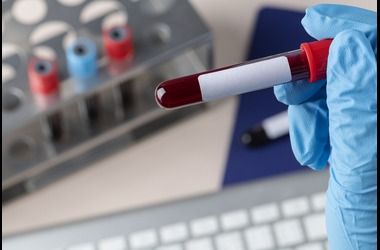General Health
Understanding Platelet (PLT) Normal Range and its Importance in Health
6 min read
Published on - 06 January 2025
Share this article
0
0 like

A platelet count (PLT) is a test that measures the number of platelets in the blood. They are small, colourless cell fragments that help in blood clotting. A lower number of platelets can be a sign of cancer, infections and other health problems, whereas a higher number of platelets may put a person at risk for stroke or heart attack. A person’s risk depends on how low or high their counts are and what is causing the issue.
Platelets, also called thrombocytes, are tiny cell fragments that form clots when a blood vessel is damaged. For example, if a person’s finger gets cut, platelets mix with clotting factors (proteins in the blood) and form a “glue” that helps stop the bleeding. There are tens of thousands of platelets in a single drop of blood.
The blog delves more into platelet normal range, and platelet normal count by age. To learn more about normal platelet count for male, normal platelet count for female, platelet normal range in child, platelet count tests and the platelet count test price, one can contact a healthcare setting, a clinic, a hospital, or a lab.
What is Platelet Normal Range?
The normal platelet count in adults is between 150,000 and 450,000 per microlitre of blood. A count below 150,000 is termed thrombocytopenia, while a count above 450,000 is called thrombocytosis. However, a platelet count outside the normal range do not necessarily mean one is at immediate risk. Platelets below 50,000 per microlitre of blood can increase the risk of bleeding, even during everyday activities.
A complete blood count (CBC) is a routine blood test that measures platelet count. However, normal platelet count can vary slightly between labs. Monitoring high or low platelet count is essential for diagnosing and managing various medical conditions effectively.
How Platelets Function in the Body?
The primary function of platelets in the body is to prevent and stop bleeding. It functions in the following manner:
- If a blood vessel is damaged, the body sends signals to platelets, which causes them to travel to the injured area.
After the platelets arrive at the site, they clump together to form a clot and prevent bleeding. - Platelets then release chemicals that promote tissue repair and maintain vascular integrity.
- This results in the body effectively responding to injuries and preventing excessive blood loss.
What Does a High Platelet Count Mean?
If a person has a high platelet count (thrombocytosis), their platelets may clump together and cause unnecessary clotting in their blood vessels. Such blood clots can lead to stroke or heart attack.
Often, a high platelet count is temporary. A person’s body can make too many platelets in response to specific situations that stress their body, like an infection or surgery. If a healthcare practitioner suspects the high levels are short-term, they may test the person again to check if the levels go down.
Platelets can be found higher in those born with rare blood disorders. In this case, the healthcare practitioner may work with the person to bring the platelet count to the normal range.
A few common causes include:
- Cancer
- Infections
- Iron deficiency
- Blood loss
- Haemolytic anaemia, a type of anaemia in which the body destroys red blood cells faster than it produces them
Removal of a person’s spleen - Surgery
- Different types of traumas
- Inflammatory disorders such as inflammatory bowel disease, rheumatoid arthritis or sarcoidosis.
What Does a Low Platelet Count Mean?
People with a low platelet count (thrombocytopenia) may not have enough platelets to clot a wound. Injury can cause bleeding, and incessant bleeding can lead to excessive blood loss (haemorrhage) and internal bleeding, which can be life-threatening.
However, not everyone with low platelet count experiences long-term or serious issues. In mild cases, a person may have no symptoms at all. It depends on what is causing their low platelets and how low their count is.
Some of the most common causes of low platelet count are:
- Cancers that slow platelet production or cancer treatments like chemotherapy.
- Side effects of medications like antibiotics, diuretics, gold salts, H2 blockers, blood thinners, anti-seizure medications, nonsteroidal anti-inflammatory drugs (NSAIDs), statins, vaccines, and sulfonamides.
- Autoimmune diseases like immune thrombocytopenic purpura (ITP) can destroy platelets.
Relation of Platelets to Cardiovascular Disease
Platelets play an important role in blood clotting. When activated by damaged blood vessel lining, they can clump together to form a clot. If a person has too many platelets, it can increase their risk of abnormal clotting.
However, cardiovascular risk often has more to do with platelet function than platelet number. For instance, a person could have a healthy number of platelets, but if they stick together too much, it can increase their chance of having a stroke or a heart attack.
- In the development of atherosclerosis, which is plaque build-up in arteries, platelets can stick to the damaged vessel walls, contributing to plaque formation by releasing inflammatory substances.
- Platelets rapidly aggregate when a plaque ruptures, which creates a clot that can block blood flow and trigger a heart attack or stroke.
To prevent cardiovascular events in high-risk individuals, medications that inhibit platelet aggregation, like aspirin and clopidogrel, are widely used.
Diagnostic Tests for Platelet Count
Platelet count test is a diagnostic test specifically designed to measure the number of platelets in a person’s blood. It provides valuable information about blood-clotting function and helps identify potential disorders.
A routine blood test called a complete blood count (CBC) typically includes platelet count measurement, along with other components such as red and white blood cell levels.
Treatment Options for Platelet Disorders
Platelet disorders, whether involving excessive platelet production (thrombocytosis) or low platelet count (thrombocytopenia), require tailored treatments based on the severity and underlying causes. The management approach may include medications, procedures, or other interventions to address the condition and minimize associated risks.
1. Treatment Options for Thrombocytosis
People with no symptoms may only need routine checkups. Those with secondary forms of thrombocytosis may rarely require treatments. For people with symptoms, their healthcare practitioners will treat the underlying cause.
Some treatment options include medications such as hydroxyurea, anagrelide, interferon alpha, and aspirin that lowers platelet levels. Procedures may include platelet apheresis to remove excess platelets.
2. Treatment Options for Thrombocytopenia
Treatment varies based on severity and the underlying cause. Mild cases may not require intervention, while more severe cases or those caused by an underlying condition or medication may need specific treatment.
Treatment options may include surgery, plasma exchange, and blood or platelet transfusions. Medications such as corticosteroids, thrombopoietin receptor agonists (TPO-RAs), azathioprine, cyclophosphamide, cyclosporine, danazol, and dapsone, rituximab, immunoglobulin therapy (IVIG) and fostamatinib (Tavalisse).
Additionally, low-molecular-weight heparin (LMWH) or unfractionated heparin (UFH) may be used to manage blood clot risks, and splenectomy, the surgical removal of the spleen, might be necessary in some cases.
How to Prevent Platelet Disorders?
To prevent platelet disorders, people need to make –
- Healthy lifestyle choices including a balanced diet of vegetables, fruits, whole grains, and healthy fats.
- Avoid alcohol and tobacco products.
- Avoid excessive sugar.
- Prioritise foods rich in B12, K, and folate
Conclusion
Understanding the platelet normal range is crucial for diagnosing and managing blood-related conditions. Regular monitoring highlights potential health issues and supports effective treatment to maintain overall health and well-being. Thus, regular health checkups are essential to preventing serious illnesses and disorders, as they enable early detection and timely treatments.
General Health
Leave Comment
Recommended for you

General Health
14 Home Remedies To Deal With Acidity Problems
Explore 14 natural home remedies to alleviate acidity problems and find relief from discomfort and heartburn.
%20(2).jpg?tr=q-80)
General Health
Widal Test for Typhoid Fever – Normal Range, Purpose, Procedure, and Test Results
Discover the normal range for typhoid tests. Learn how abnormal results can indicate an infection and the importance of prompt medical attention.

General Health
Shingles Diet: Essential Foods To Eat And Avoid
foods to avoid with shingles, foods to eat with shingles, shingles diet
Subscribe
Sign up for our free Health Library Daily Newsletter
Get doctor-approved health tips, news, and more.
Visual Stories

The Best Exercises for Controlling Blood Sugar Levels
Tap to continue exploring
Recommended for you

General Health
14 Home Remedies To Deal With Acidity Problems
Explore 14 natural home remedies to alleviate acidity problems and find relief from discomfort and heartburn.
%20(2).jpg?tr=q-80)
General Health
Widal Test for Typhoid Fever – Normal Range, Purpose, Procedure, and Test Results
Discover the normal range for typhoid tests. Learn how abnormal results can indicate an infection and the importance of prompt medical attention.

General Health
Shingles Diet: Essential Foods To Eat And Avoid
foods to avoid with shingles, foods to eat with shingles, shingles diet